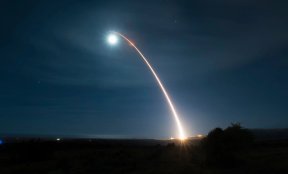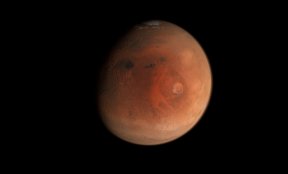It's here. I’ve been harping on about this for a while now. I was so looking forward to it that one of my 2024 things to look forward to was that we'd be one year closer to first light. I'm talking about the Vera C. Rubin Observatory of course, and it has not disappointed. The first images, commissioning images mind you, were released the other day, and they are insane. But let me start by explaining what it is first.
The Rubin is an optical telescope observatory on the summit of a mountain in Chile. Now you might be thinking that we've seen photos from the Hubble Space Telescope (HST) and the James Webb Space Telescope (JWST), and sure, they were pretty, but what's different about this? Well, there's one really important difference. The HST and JWST are really great at zooming in on a galaxy, or a patch of sky, and taking photos, but we get wide angle from Rubin. And the photos are amazing.
There is a scientific benefit to this, too. Imagine trying to read a sentence by looking at individual words randomly scattered on a page. Sometimes you'd confuse the order of the words, or maybe even leave some out. You'd be completely changing the meaning of the sentence, sometimes without even knowing it. That's the problem we have when we look at photos from Hubble. We can take photos of distant galaxies and learn all sorts of things about them. But how do those galaxies co-exist? How do they interact? What context are we missing by zooming in on the details? And that's where Rubin comes in. Rubin gives us the whole sentence, word perfect, a wide-angle view of the sky that will show us the Universe in a way we haven't seen it before.
And it's fast. So fast, it can image the entire southern night sky every three nights. That means if anything moves, if anything changes, we are going to see it. And just to prove the point, on night one of operations Rubin found 989 new asteroids. After a week, it had found 2,104.
The data we are going to get back from Rubin is staggering. In one commissioning image alone, there are more than 10 million galaxies, many of which we've never seen before. To put this in perspective, I bought a 1 TB portable drive the other day for documents and photos, and it will probably last me the best part of a decade. In that same period, the Rubin Observatory will go through at least 20 of those drives every single night. It will be collecting data for a southern sky survey called the Legacy Survey of Space and Time or LSST. Speaking of which, Rubin was originally going to be named the LSST, not after the survey, but as an acronym for the Large Synoptic Survey Telescope. That name is straight out of the book for most boring space observatory names, and thankfully there are people in high places that thought so as well. The Vera C. Rubin Observatory is much better, although we are all legally obliged to call it the "NSF-DOE Vera C. Rubin Observatory, funded by the U.S. National Science Foundation and the U.S. Department of Energy's Office of Science" because, bureaucracy.
So, who was the actual Vera Rubin after whom this modern marvel is named? Rubin (the astronomer, not the observatory) found that the outermost stars in galaxies are moving way too fast, and it turns out that that is some of the best evidence we have for dark matter. One of Rubin's (the observatory's!) goals will be to advance our understanding of the nature of dark matter, but it's also going to be doing many other fun things like looking for Planet Nine and supernovae. In the end though it’ll be the new things that we discover, finding the answers to questions we didn't even know to ask, that will be the legacy of this observatory. And I can't wait.




